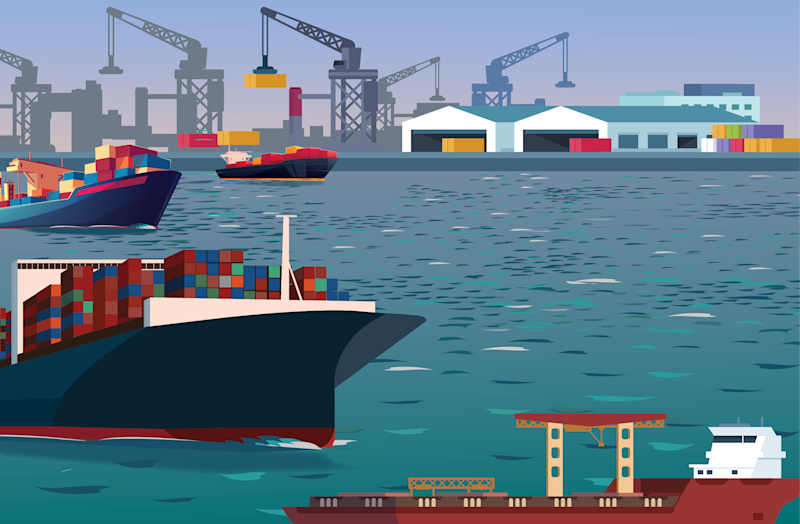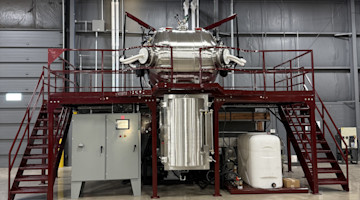While this might seem paradoxical, the current supply chain disruptions are the classic good news-bad news situation.
First, the good.
Austan Goolsbee, who chaired the Council of Economic Advisors during the Obama administration, recently told POLITICO, “Normally, demand for services is the majority of what we spend our money on.” This means things like eating out, taking vacations, and getting contractors in or landscapers out.
The pandemic hit, and, as Goolsbee noted, “Demand for durable goods went up. Demand for cars went up. Demand for houses, way up.”
In other words, people are buying durable goods at an unprecedented pace.
That’s the good stuff – high demand for durable goods.
Which brings us to the bad.
Goolsbee said that “all the pandemic shortages coming from the supply chain” are “concentrated on physical goods and stuff coming through the ports.”
Let’s take the auto industry, for example.
According to Bill Rinna, director, vehicle forecasts, the Americas, at LMC Automotive: “Our current projection for North America lost production due to disruptions is 2.8 million units.” Clearly a massive loss for the industry – as well as all of the peripheral companies that support it.
However, Rinna notes that “90% of that is due to the lack of chips.”
The Opposite of “Trifecta”
The chip shortage is arguably a “perfect storm” event, combining these factors:
COVID.
There have been serious shutdowns at semiconductor plants in China, Taiwan, and Malaysia.
Weather.
Samsung, NXP, and Infineon all shut their chip fabs down in the Austin, Texas, area in February 2021 due to the winter storm. Samsung was down for a month.
Fire.
At the Renesas Electronics plant northeast of Tokyo, a fire gutted the N3 building where it built 300-mm chips, primarily for automotive applications, on March 19, 2021. The company announced it was back to 100% of its pre-fire operation on June 24 – after some three months of being down.
There is no quick fix for this. Like any complex manufactured product – and let’s face it: semiconductors are particularly complex – it takes time to produce. As a general rule of thumb, according to the Semiconductor Industry Association, it can take up to 26 weeks from order to delivery.
While there are efforts to build new plants in the United States and elsewhere to increase capacity, the SIA notes that it takes 18 to 24 months to build a semiconductor factory (aka “fab”). The trade association reports that there are 26 fabs going into production this year – three in the United States – and there are 26 more being built – four in the United States.
The semiconductor industry is clearly making a big spend on increasing capacity. SIA estimates that the average capex rate of spend from 2021 to 2025 will be $156 billion, as compared with $97 billion annually from 2016 to 2021.
It is worth noting that not only were more semiconductors sold in Q2 2021 than “any quarter in history,” but the auto industry set records in its purchase of semiconductors every month from September 2020 to July 2021.
All that, and we are still mired in a shortage.
But Wait, There’s More
Ports. Whether it is semiconductors from Asia or components from Japan, there is the issue at the ports. The Port of Los Angeles – the United States’ biggest port – reported that it processed 26.4% more cargo in the first three quarters of 2021 than in the same period in 2020. Port of Los Angeles Executive Director Gene Seroka notes the port was handling 17 ships at anchor daily – a 70% increase over pre-pandemic volumes.
Trucks. There is the situation leaving the ports: According to the American Trucking Associations, pre-pandemic, the United States was short 60,800 drivers. Now, they’ve found it’s gotten worse: “In 2021, we estimate the industry is roughly 80,000 drivers short of what it needs to optimally meet current freight demand.” Even if one has built a plant in Anywhere, USA, transport is an issue.
Cybercrime. And if all of this isn’t enough to make a manufacturer think that it might be easier to do something else for a living, there is another factor that can wreak havoc on the supply chain: Cyberattacks. According to Black Kite, which provides security rating services for companies, nearly half of automotive suppliers are “highly susceptible” to a ransomware attack, and more than 17% of them are likely to incur an attack.
Other Things. Like magnesium. The material is used for structural applications in vehicles (e.g., diecast cross-car beams) as well as for alloying aluminum. The vast majority of the material comes from China, and there is concern there may be a shortage.
Chip capacity may go up. Magnesium availability may go down.
I asked Jeff Schuster, president, Americas Operation and Global Vehicle Forecasting at LMC Automotive: What are the potential ramifications of a magnesium shortage if, on a scale of 1 to 10, the chip shortage is a 10?
“I think it is quite important,” Schuster answers. “But I also don’t think it is anywhere near the issue of semiconductors.” He adds, “I would say it is a 2 or 3 at this point.”
Not bad. But not good. And potentially quite bad as OEMs work to make their vehicles lighter with materials including aluminum.
What’s a Manufacturer to Do?
While there is an argument to be made to shorten supply chains, perhaps to within the country’s borders, it isn’t a guarantee of no supply chain disruptions.
Kristin Dziczek is the senior vice president of research at the Center for Automotive Research (CAR). She pays particular attention to manufacturing operations, and her word for what’s going on right now pretty much nails it: “Wonky.”
“Right now,” she says, “Even if a manufacturer doesn’t make something without a chip in it, it is impacted.” Even seat foam is impacted by the supply chain situation, Dziczek says.
While there is something to be said for reshoring, Dziczek points out there are still problems. She references the Great Freeze in Texas. She points out that in April 2020, a tornado ripped the roof off a BorgWarner transfer case plant in Seneca, South Carolina, which put the factory out of production for five weeks.
In May 2018 there was a massive fire at a magnesium diecasting plant of a supplier (Meridian, which has subsequently filed for Chapter 7) that shut down plants of the Detroit Three – including the F-150 lines of Ford.
Even Tesla had a fire in March 2021 in its diecasting operation in Fremont, California, which disrupted production.
And there are things like labor disputes, such as the recent John Deere strike that shut down operations on Oct. 14, 2021, and lasted for over a month.
All of this leads Dziczek to observe: “Reshoring is beneficial but not a solution.”
Many Eggs. Many Baskets.
What could be beneficial, Dziczek suggests, is what she describes as “many eggs in many baskets.”
That is while supplier consolidation has been the approach taken, especially as manufacturers have taken on some of the characteristics of the Toyota Production System, including just-in-time, there has been a tendency to “lean out” the supply chain.
Or said another way: to put more work at fewer suppliers. There is conceivably a benefit to both the OEMs and the suppliers. Until there is a sneeze – everybody gets a cold. A bad cold.
Dziczek notes there is a looming issue on the supply chain front that probably isn’t getting the attention it deserves: Many of the materials that go into electric vehicle batteries come from places like the Congo (cobalt) and Indonesia (nickel). “We don’t know if that supply chain has been secured.”






